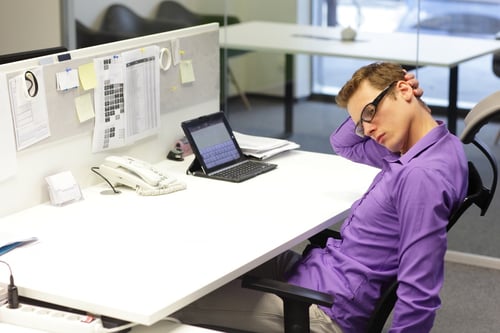
3 min read
We’ve said it before: physical inactivity has been named as the largest public health crisislargest public health crisis of the 21st century.
So now let’s have a look at what we should be doing, how we measure up to the public recommendations and (sorry!) the unhappy truth of what happens if we don’t keep moving.
The Numbers Breakdown: We’re Not Doing Well...
First of all, Public Health England recommend that we elevate our heart rates for a minimum of 150 minutes per week. Hmmm...that's just 2.5 hours (which coincidentally is also the average amount of time that people spend watching TV in the UK each day). Doesn't sound too challenging does it?
Presumably we're knocking that figure out of the park then, right?
Sadly not. Only 31 percent of the UK population is achieving these heady heights, with lack of time being cited as the No. 1 reason for not participating in an exercise programme. And yet, those 2.5 hours of TV time are still making it on our to-do list.

And not only do we fall short on getting our heart rates elevated for long enough, but we also sit at work for close to six hours per day (51 percent of employees also admit to only leaving their desk to go to the toilet and 62 percent say they eat lunch at their desk as they’re too busy to take a break according to Westfield Health).
Where does this leave us? This is how the numbers stack up:
- Sickness absenteeism costs the UK £14 Billion per year (that’s £554 per person)
- The average UK employee loses 6.9 days of work per year through sickness.
- Minor illness (e.g. cold / flu) is the most common cause of short-term absence, followed by musculoskeletal injuries, back pain and then stress (CIPD, 2015)
- People who spend an extended time sitting down die at an earlier age than those who sit less: even keen exercisers simply can’t offset the effects of sitting at their desk for long periods.
- Mental health problems are costing employers money each year at work
Scary, eh? We think so! And what have we all been doing to improve the health and wellbeing of our employees thus far?

The One-Two Punch to lessen physical inactivity: Proactive and Preventative
For many years there was an almost entirely reactive approach to corporate wellbeing with the focus being on curative provision such as healthcare plans and Private Medical Insurance. Although reactive, at least if something went wrong, there were plans in place designed to fix you!
In more recent years, the wellbeing focus has shifted to early identification of risk factors through tools like Health Risk Assessments and Employee Assistance Programmes. This approach meant your company would work with a provider to look at your health status and try to predict your risk of experiencing the problems above. This approach is more proactive though isn’t welcomed by all employees and often has poor uptake: while the fit and healthy often look forward to having their tests done, other employees feel their employer is only interested in keeping them well so they don't miss work!
While these two approaches have their place, there’s a need for more programmes that take into consideration a proactive and preventative approach to health and wellbeing.
So when reviewing your company’s strategy for physical wellbeing, ask yourself “what do we provide that gives our employees the opportunity to get moving more?”
Our newest product SmartFit™, available in the UK, can help your workforce with access to discounts on gym memberships, fitness classes and more to help us combat the physical inactivity your employees might be struggling with.
Get in touch today to learn more.

 Nick Hudson
Nick Hudson
